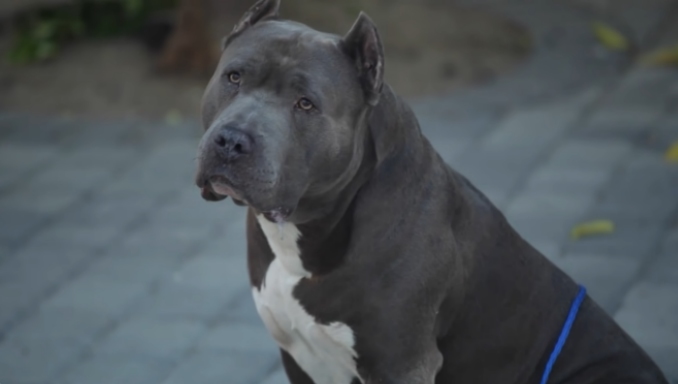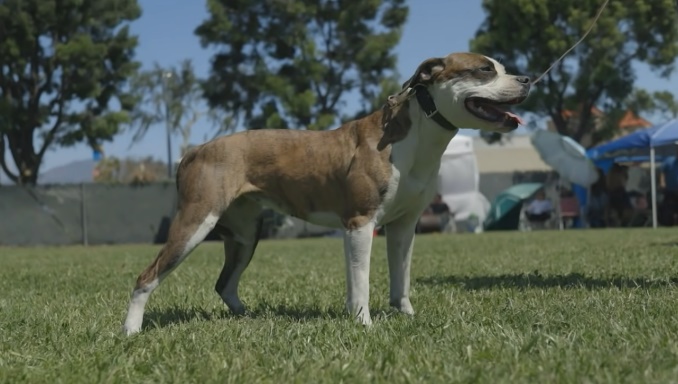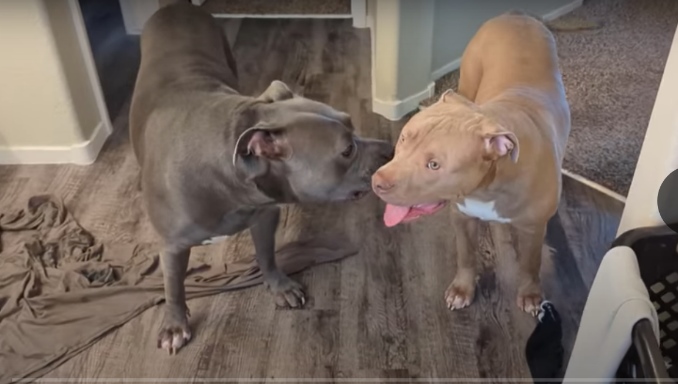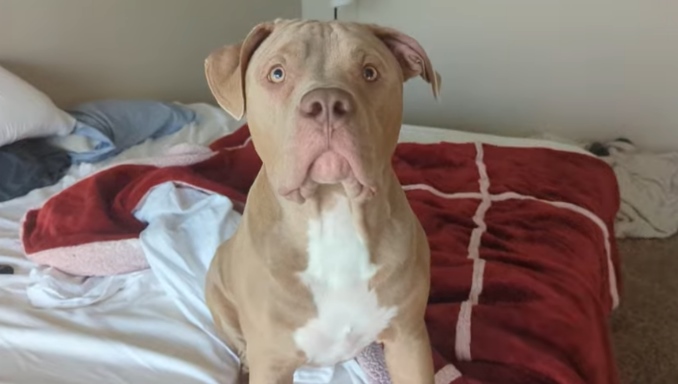Pitbull vs Bulldog
Pitbull vs Bulldog: There is a lot of confusion about the difference between pit bulls and bulldogs. Some people think they are the same breed, while others believe that one is a subset of the other. In this post, we’ll clear up the confusion and take a closer look at each breed. We’ll also discuss some of the key differences between them. So, if you’re interested in learning more about pit bulls and bulldogs, keep reading!
Pitbull and Bulldog – Origin
The origin of the pitbull is a matter of some debate. Some believe that they are descended from bull-baiting dogs, while others believe that they are a mix of several different breeds. However, what is certain is that they were developed in the United Kingdom in the 19th century.
Pitbulls were originally bred for the purpose of baiting bulls, bears and other large animals. This cruel sport involved tying a bull or bear to a post in the center of a ring, and then releasing a number of dogs into the ring to attack the animal. The dogs would bite and hold on to the animal until it was exhausted, at which point the handlers would kill the animal.
This sport was popular in the UK until it was outlawed in 1835. At this point, many of the dogs used for baiting were set loose, and they eventually made their way to the United States, where they became known as pit bulls.
Pit bulls in the United States were originally bred as general purpose farm dogs. They were used for tasks such as guarding the property, herding livestock and even hunting. Due to their versatility and trainability, they became popular pets in many households.
From those struggles, people give themselves the name Pitbull: Pit means fight, Bull means cows. Pitbull means “the one who fights with the bulls” . Actually, the Pitbull isn’t exactly the name option of a breed dog. It is used to refer to dog breeds with similar appearance, with the first common combination including: American Pit Bull Terrier, Bull Terrier, American Staffordshire Terrier and Staffordshire Bull Terrier.
However, their reputation began to change in the late 20th century. From the 1970s onwards, there was a sharp increase in the number of reported attacks by pit bulls, which led to them being labeled as “dangerous dogs”. In many states, ownership of a pit bull is now heavily regulated or even banned outright.
Despite their reputation, pit bulls can make excellent pets if they are properly trained and socialized. They are generally loyal and affectionate towards their owners, and can be good with children if raised with them from a young age. However, their powerful jaws and muscular build mean that they can be dangerous if not properly trained and controlled.
If you are considering getting a pit bull, it is important to do your research and make sure that you are prepared to take on the responsibility of owning a potentially dangerous dog.
Next we will learn about the Bulldog breed, let’s grasp this information before going into the main topic Pitbull vs Bulldog.
Bulldogs, on the other hand, were bred in France. They were also used for fighting, but they didn’t do as well as the Pitbulls. This is because Bulldogs are less aggressive and more docile.
When the two breeds were brought to America, they were both used for fighting. However, this soon changed. In the early 1900s, Pitbulls became popular as family pets. They were seen as loyal and loving dogs. Bulldogs, on the other hand, remained fighting dogs.
It wasn’t until the late 1900s that Bulldogs started to become popular as family pets. This is because they were featured in movies and TV shows. They were also used in advertising. Today, both breeds are popular as family dogs. However, Pitbulls are still more aggressive than Bulldogs.
The first thing to understand is that both pit bulls and bulldogs are descended from the same ancestor – the English Bulldog. This breed was originally developed in England for bull-baiting, a popular sport in which dogs were pitted against a bull in an arena. Over time, the English Bulldog evolved into two distinct breeds – the Bulldog and the Pit Bull.
The Bulldog is the direct ancestor of the modern-day English Bulldog, a gentle and docile breed that makes an excellent companion animal. The Pit Bull, on the other hand, is the direct ancestor of the American Pit Bull Terrier, a much more athletic and aggressive breed.
Pitbull vs Bulldog – Appearance
The American Pitbull Terrier is a medium-sized, short-coated dog with a compact, muscular body. The head is large and square, with a short muzzle and strong jaws. The eyes are small and set far apart, and the ears are small and erect. The tail is thick at the base and tapers to a point. The coat is short and smooth, and can be any color.
The Bulldog is a large, muscular dog with a short, thick coat. The head is large and square, with a short muzzle and strong jaws. The eyes are small and set far apart, and the ears are small and erect. The tail is thick at the base and tapers to a point. The coat is short and smooth, and can be any color.
Both breeds are muscular and powerful, but the American Pitbull Terrier is larger and more muscular than the Bulldog. The Bulldog is shorter and stockier, with a heavier head and shorter legs.
When it comes to appearance, the American Pitbull Terrier and the Bulldog are very similar. Both breeds are short-coated, compact, and muscular, with large heads and square jaws. The main difference is size, with the American Pitbull Terrier being larger and more muscular than the Bulldog.
One of the easiest ways to tell a pit bull and a bulldog apart is by their appearance. Bulldogs are heavy, compact dogs with short legs and thick bodies. They have large, square heads and wrinkled skin. Pit bulls, on the other hand, are leaner and more muscular than bulldogs. They have long legs and narrow heads. Their skin is tight and smooth.
Weight:
The average weight of a Pitbull is 30-60 pounds, while the average weight of a Bulldog is 40-50 pounds.
Size:
The average height of a Pitbull is 18-21 inches, while the average height of a Bulldog is 12-16 inches.
Coat:
Pitbulls have short, smooth coats, while Bulldogs have short, dense coats.
Color:
Pitbulls can be any color, while Bulldogs are usually white, brindle, or fawn.
Ears:
Pitbulls have erect ears, while Bulldogs have floppy ears.
Tail:
Pitbulls have long tails that taper to a point, while Bulldogs have short tails that are thick at the base.
Pitbull vs Bulldog – Temperament
In America, the Pitbull is a popular dog breed with a reputation for being aggressive and dangerous. However, this isn’t always the case. While Pitbulls can be aggressive, they are also known to be loyal, loving, and protective of their families. Bulldog breeds, on the other hand, are typically known for being calm, gentle, and loving. They make great family pets and are often very tolerant of children.
When it comes to temperament, there is no clear winner between the two breeds. It really depends on the individual dog and how they are raised. Both breeds can make great pets if they are raised in a loving home with plenty of attention and socialization. However, if a Pitbull or Bulldog is not properly socialized, they may be more likely to exhibit aggressive behavior.
Bulldogs are known for being gentle, docile and loyal. They are good with children and make excellent companion animals. Pit bulls, on the other hand, are much more aggressive and athletic. They were originally bred for fighting, and this instinct is still present in many dogs today. Pit bulls require a lot of exercise and need to be properly trained and socialized from a young age.
Pitbull vs Bulldog – Health
Bulldogs typically have a number of health problems that don’t affect Pitbulls. Bulldogs are prone to hip dysplasia, which is a condition that causes the hip joint to develop abnormally. This can lead to pain and lameness. Bulldogs also often have trouble breathing because of their short snouts.
Pitbulls, on the other hand, are not as prone to these health problems. They generally have fewer respiratory issues and are not as likely to develop hip dysplasia. However, Pitbulls can be more aggressive than Bulldogs and may be more likely to bite.
Both pit bulls and bulldogs are susceptible to a number of health problems. Bulldogs, for example, are prone to hip dysplasia, a condition that can cause pain and lameness. Pit bulls are also susceptible to hip dysplasia, as well as a number of other health problems.
Lifespan:
The average lifespan of a Bulldog is 8-10 years, while the average lifespan of a Pitbull is 12-14 years.
Fertility:
The average litter size for Bulldogs is 4-6 puppies, while the average litter size for Pitbulls is 6-8 puppies.
Possibility of getting sick:
Pitbulls are less likely to get sick than Bulldogs.
Average cost of vet bills:
The average cost of vet bills for a Bulldog is $500-$700, while the average cost of vet bills for a Pitbull is $300-$400.
Pit bulls and bulldogs are both popular dog breeds with a lot to offer. They are both loyal, loving, and protective of their families. However, they do have some differences. Pit bulls are more aggressive and athletic, while bulldogs are more docile and gentle. Both breeds require a lot of exercise and socialization from a young age. When it comes to health, pit bulls are generally healthier than Bulldogs. However, both breeds are susceptible to a number of health problems. The average lifespan of a Bulldog is 8-10 years, while the average lifespan of a Pitbull is 12-14 years. When it comes to cost, the average cost of vet bills for a Bulldog is $500-$700, while the average cost of vet bills for a Pitbull is $300-$400.
Summary Similarities and Differences between Pitbull and Bulldog
Pitbull and Bulldog are two breeds of dogs that have a lot in common. They are both loyal, loving, and protective of their families. However, they do have some differences. Pit bulls are more aggressive and athletic, while bulldogs are more docile and gentle. Both breeds require a lot of exercise and socialization from a young age. When it comes to health, pit bulls are generally healthier than Bulldogs.
However, both breeds are susceptible to a number of health problems. The average lifespan of a Bulldog is 8-10 years, while the average lifespan of a Pitbull is 12-14 years. When it comes to cost, the average cost of vet bills for a Bulldog is $500-$700, while the average cost of vet bills for a Pitbull is $300-$400.
Pitbulls can cost anywhere from $500 to $5,000. The price of a Pitbull depends on many factors such as the breeder, the bloodline, the color, and more.
The cost of a Bulldog varies depending on factors such as the breeder, where you live, and whether you want a male or female. Generally, Bulldog puppies cost between $1,500 and $2,500. However, show quality Bulldogs can cost upwards of $5,000. Bulldogs are not cheap!
Pitbull vs Bulldog – Which is the better breed?
There is no definitive answer to this question. It really depends on what you are looking for in a dog. If you want a gentle and docile companion, a Bulldog may be the better choice. If you are looking for a more active and athletic dog, a Pit Bull may be the better breed. Ultimately, the best way to choose a dog is to meet both breeds and see which one is the best fit for your lifestyle and personality.
Pitbulls are less expensive to purchase than Bulldogs, but they require more exercise and training. Bulldogs are more expensive to purchase, but they are less active and easier to train. Ultimately, the best way to choose a dog is to meet both breeds and see which one is the best fit for your lifestyle and personality.
Pitbulls were originally bred as fighting dogs, while Bulldogs were bred as companion animals. Pitbulls are much more aggressive and athletic than Bulldogs, and require a lot of exercise and training. Bulldogs are gentle, docile and loyal, and make good companion animals. Ultimately, the best way to choose a dog is to meet both breeds and see which one is the best fit for your lifestyle and personality.
Based on my experience as a veterinarian and as someone who owns both types of dogs, I would like to give you some advice.
20 tips to choose the right dog for you:
1. Consider your lifestyle and whether or not you have the time to exercise a high-energy dog breed.
2. If you live in an apartment, choose a smaller breed that doesn’t require as much space.
3. Think about how much time you are willing to spend training your new dog. Pitbulls require more training than Bulldogs.
4. Choose a breed that is compatible with your personality. If you are laid-back, choose a Bulldog. If you are more active, choose a Pitbull.
5. Consider how much you are willing to spend on vet bills. Bulldogs tend to have higher vet bills than Pitbulls.
6. Think about how much time you are willing to spend grooming your new dog. Bulldogs require less grooming than Pitbulls.
7. Choose a breed that is compatible with your lifestyle. If you travel frequently, choose a Bulldog. If you are home more often, choose a Pitbull.
8. Pitbull vs Bulldog, consider how much you are willing to spend on food. Pitbulls require more food than Bulldogs.
9. Think about how much time you are willing to spend walking your new dog. Both breeds require daily walks, but Pitbulls require longer walks.
10. Choose a breed that is compatible with your family. If you have young children, choose a Bulldog. If you have older children, choose a Pitbull.
11. Consider how much you are willing to spend on toys and other supplies. Pitbulls require more toys and supplies than Bulldogs.
12. Think about how much time you are willing to spend exercising your new dog. Both breeds require daily exercise, but Pitbulls require more exercise.
13. Choose a breed that is compatible with your climate. If you live in a hot climate, choose a Bulldog. If you live in a cold climate, choose a Pitbull.
14. Consider how much you are willing to spend on boarding or daycare. Both breeds require boarding or daycare, but Pitbulls require more expensive boarding or daycare.
15. Think about how much time you are willing to spend walking your new dog. Both breeds require daily walks, but Pitbulls require longer walks.
16. Choose a breed that is compatible with your neighborhood. If you live in a quiet neighborhood, choose a Bulldog. If you live in a more active neighborhood, choose a Pitbull.
17. Consider how much you are willing to spend on fencing. Both breeds require fencing, but Pitbulls require more expensive fencing.
18. Think about how much time you are willing to spend socializing your new dog. Both breeds require socialization, but Pitbulls require more socialization.
19. Choose a breed that is compatible with your lifestyle. If you work long hours, choose a Bulldog. If you have a more flexible schedule, choose a Pitbull.
20. Consider how much you are willing to spend on professional training. Both breeds require professional training, but Pitbulls require more expensive professional training.
How to Train a Pitbull
In addition to comparing Pitbull vs Bulldog, many people also care how to train a pitbull. Pitbulls are not naturally aggressive dogs, but they can be if they are not trained properly. If you want to train a Pitbull, it is important to start early. Puppies learn quickly and will respond well to training. Older dogs may already have some bad habits that need to be broken.
The best way to train a Pitbull is with positive reinforcement. This means rewarding the dog for good behavior and ignoring bad behavior. Dogs learn by association, so if they are consistently rewarded for good behavior, they will start to associate that behavior with the reward.
Pitbulls are intelligent dogs and can be very stubborn. They need a firm hand when it comes to training. However, they should never be treated harshly. This will only make them resentful and more likely to act out.
One of the most important things to remember when training a Pitbull is consistency. Dogs thrive on routine and if they are not sure what is expected of them, they will become confused and frustrated. Every family member should be involved in the training process so that the dog knows what is expected of him.
How to Train a Bulldog
Training a Pitbull can be a rewarding experience for both you and your dog. With patience and consistency, you can have a well-behaved dog that is a joy to be around.
The key to successful Bulldog training is consistency. Dogs learn best when they are given clear and consistent commands that they can understand. Be sure to use the same words and phrases for each behavior you want your dog to learn, and be consistent in rewarding (or not rewarding) desired behaviors.
Here are a few tips to help you get started with training your Bulldog:
1. Choose a quiet place to train your dog, free from distractions. This will help your pup focus on the task at hand and not get sidetracked by other things going on around him.
2. Start with basic commands like sit, stay, come, and down. Once your dog masters these, you can move on to more advanced tricks or behaviors.
3. Use positive reinforcement to encourage desired behaviors. This can be in the form of treats, petting, or verbal praise. Avoid using punishment as a training method, as this can only lead to fear and mistrust.
4. Be patient and keep training sessions short, so as not to overwhelm your Bulldog. Like humans, dogs have a limited attention span and will quickly become bored or frustrated if asked to do something they don’t understand.
5. End each training session on a positive note, with your dog successfully completing the desired behavior. This will help your pup associate training with something positive and fun, making him more likely to want to learn new things in the future.
With patience and consistency, you can successfully train your Bulldog to be a well-behaved companion. Just remember to have fun with it – after all, learning should be enjoyable for both you and your pup!
How Many Types of Pitbull Are There?
In addition Pitbull vs Bulldog, a question many people care is how many types of pitbull are there. There are three types of Pitbulls: the American Pitbull Terrier, the American Staffordshire Terrier, and the Staffordshire Bull Terrier. All three are considered to be part of the same breed, and all three are recognized by the American Kennel Club. However, there are some subtle differences between the three types.
The American Pitbull Terrier is the original Pitbull, and is the type most often associated with the breed. They are a medium-sized dog, with a strong, muscular build. They have a short, dense coat that can be any color or combination of colors.
The American Staffordshire Terrier is slightly larger than the American Pitbull Terrier, and has a longer head and muzzle. They also have a longer coat, which is usually white with patches of color.
The Staffordshire Bull Terrier is the smallest of the three types, and has a stocky, muscular build. They have a short coat that is typically black, brindle, or blue.
All three types of Pitbulls are intelligent, loyal, and loving dogs. They are great with children and make excellent family pets. However, they can be stubborn and willful, and require firm, consistent training. They also need plenty of exercise to stay healthy and happy.
How Many Types of Bulldogs Are There?
What about Pitbull vs Bulldog with their different breeds? There are three types of Bulldogs: the English Bulldog, the French Bulldog and the American Bulldog. All three are recognized by the American Kennel Club. The English Bulldog is the most popular type of Bulldog in the United States. The French Bulldog is the second most popular type of Bulldog in the United States. The American Bulldog is the third most popular type of Bulldog in the United States.
Bulldogs are known for their short noses, stocky build and wrinkled faces. They are a loyal and friendly breed of dog that make great family pets. Bulldogs are also known for being stubborn and may need extra patience when training.
The English Bulldog was originally bred in England in the 1500s. The French Bulldog was originally bred in France in the 1800s. The American Bulldog was originally bred in the United States in the 1900s.
All three types of Bulldogs are similar in many ways, but they also have some distinct differences. For example, English Bulldogs typically have a longer and wider head, while French Bulldogs have a smaller and more delicate head. Additionally, French Bulldogs typically have shorter legs than English Bulldogs. American Bulldogs are the largest of the three Bulldog breeds and can weigh up to twice as much as a French Bulldog.
If you’re considering adding a Bulldog to your family, be sure to do your research on the different types of Bulldogs to see which one would be the best fit for you and your home.
Pitbull vs Bulldog, Who Will Win?
It is difficult to predict who would win in a fight between a Pitbull and a Bulldog because it would depend on many factors, such as the size, weight, age, and health of the dogs involved. However, based on their reputation, Pitbulls are typically considered to be more aggressive than Bulldogs, and thus may be more likely to win in a fight.
Can a Pitbull Beat a Lion?
No, a Pitbull cannot beat a lion. Lions are much larger and more powerful than Pitbulls, and would easily win in a fight. Not to mention that the lion is a wild animal while the pitbull is domesticated. Pitbulls are brave dogs, but they are no match for a lion.
When Does Pitbull Stop Growing?
Most Pitbulls will stop growing by the time they are 18 months old, though some may continue to grow until they are 2 years old. Full-grown, the average Pitbull is between 17 and 21 inches tall at the shoulder and weighs between 30 and 65 pounds.
Pit bulls typically stop growing between one and two years of age. However, they may continue to fill out and develop muscle mass during this time. Full physical maturity is not typically reached until around three years of age.
FAQs of Pitbull vs Bulldog
How big do Staffordshire Bull Terriers get?
Staffordshire Bull Terriers typically weigh between 24 and 38 pounds and stand 14 to 16 inches tall at the shoulder. However, some may grow to be larger or smaller than this.
What is the difference between a Pitbull and an American Staffordshire Terrier?
The main difference between a Pitbull and an American Staffordshire Terrier is their size. Pitbulls are typically smaller than American Staffordshire Terriers. Additionally, American Staffordshire Terriers are bred to be more gentle and good-natured than Pitbulls.
Pitbull vs Bulldog when it comes to friendliness?
When it comes to friendliness, both the Pitbull and Bulldog can make wonderful pets. They each have their own unique personalities, but some general characteristics tend to prevail. The Pitbull is a very loyal breed of dog that loves people and often enjoys being around them. They are active and energetic dogs that enjoy playing and spending time with their family. They are also very social animals, so they tend to get along well with other pets in the house.
On the other hand, Bulldogs tend to be more laid-back and relaxed dogs that enjoy being around people but don’t require as much attention or activity as a Pitbull would. Bulldogs are known for their loyalty and devotion to their owners, and they can make excellent companions. They are also known for being more tolerant of strangers than the Pitbull is. While Bulldogs may not be as energetic or playful as a Pitbull, they still love plenty of attention and affection from their owners.
In terms of friendliness, both breeds can make great pets, but it is important to remember that each individual dog is different. Before choosing either breed as a pet, it is best to research their temperament and behavior and make sure they will fit in with your lifestyle. With proper training and socialization, both the Pitbull and Bulldog can make fantastic loyal companions.
Do Pitbulls have a locking jaw?
No, Pitbulls do not have a locking jaw. This is a myth that has been perpetuated about the breed. Pitbulls do have powerful jaws, but they do not lock into place like some other dog breeds.
Are American bulldogs dangerous?
No, American Bulldogs are not dangerous. They are a loyal and friendly breed of dog that make great family pets. However, they may be more likely to bite than other dogs if they feel threatened or scared.
Do English Bulldogs shed?
Yes, English Bulldogs do shed. They are a medium shedding breed, which means they will shed an moderate amount of hair. They are not considered to be a hypoallergenic breed.
Are Pitbulls dangerous?
No, Pitbulls are not dangerous. They are a loyal and friendly breed of dog that make great family pets. However, they may be more likely to bite than other dogs if they feel threatened or scared.
Conclusion
Bulldogs and Pitbulls are two different types of dogs that share a common ancestor. While they may look similar, there are some key differences between the two breeds. As a potential dog owner, it’s important to be aware of these distinctions before making your final decision about which type of dog is right for you. If you already own one of these breeds or are considering getting one, make sure to provide your pet with the necessary training and care so that both you and your pup can live happily together.
Above is the article “Pitbull vs Bulldog”, Thanks for reading!













